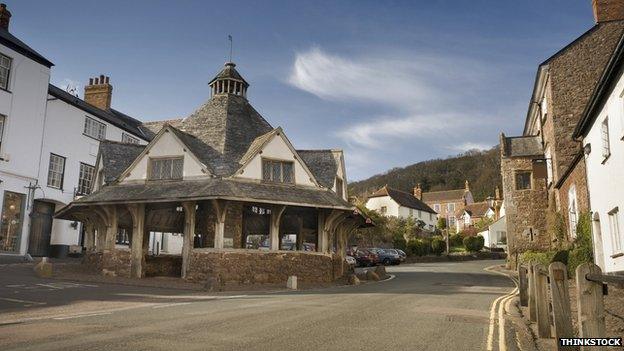'Wrong stone row' in Dunster could see extra £60,000 cost
- Published

The Somerset village of Dunster attracts thousands of visitors a year
Re-laying a pavement in Dunster, Somerset, where cobble stones were removed, could cost £60,000.
The cobbles were replaced with stone paving slabs to stop people with buggies and prams and those in wheelchairs having to use the road.
But some villagers say the blue lias stone used "looks like concrete" and should be replaced.
Somerset County Council said it was listening to concerns before making a further decision.
It said it would be prepared to replace the blue lias with Brecon grey slabs - which are used elsewhere in Dunster - if acceptable, but added it "would not be cheap".
The work, on West Street, was part of a £400,000 highways improvement scheme, which also included upgrades to traffic signals and resurfacing work.
Councillor Harvey Siggs, who is responsible for highways, said the majority of the work "had been very successful".
"However, the choice of paving slabs used in West Street has been the subject of some concern." he said.
'Medieval streets'
Dunster was part of the Luttrell family estate until 1951, when it was sold. After the sale, Somerset County Council's highways department took responsibility for the roads but not the pavements.
It previously said it would only adopt the pavement if a smooth surface was laid.
The cobbles had fallen into a state of disrepair and people had been falling and injuring themselves.
The Dunster Working Group wanted to re-lay them, but was worried about being sued if anyone fell.
The village attracts thousands of visitors a year because of its 1,000-year-old castle and features including the medieval cobbled streets.
The Dunster Working group includes representatives from Somerset County Council, the local parish council, the National Trust and the Exmoor National Park Authority.
- Published19 October 2010